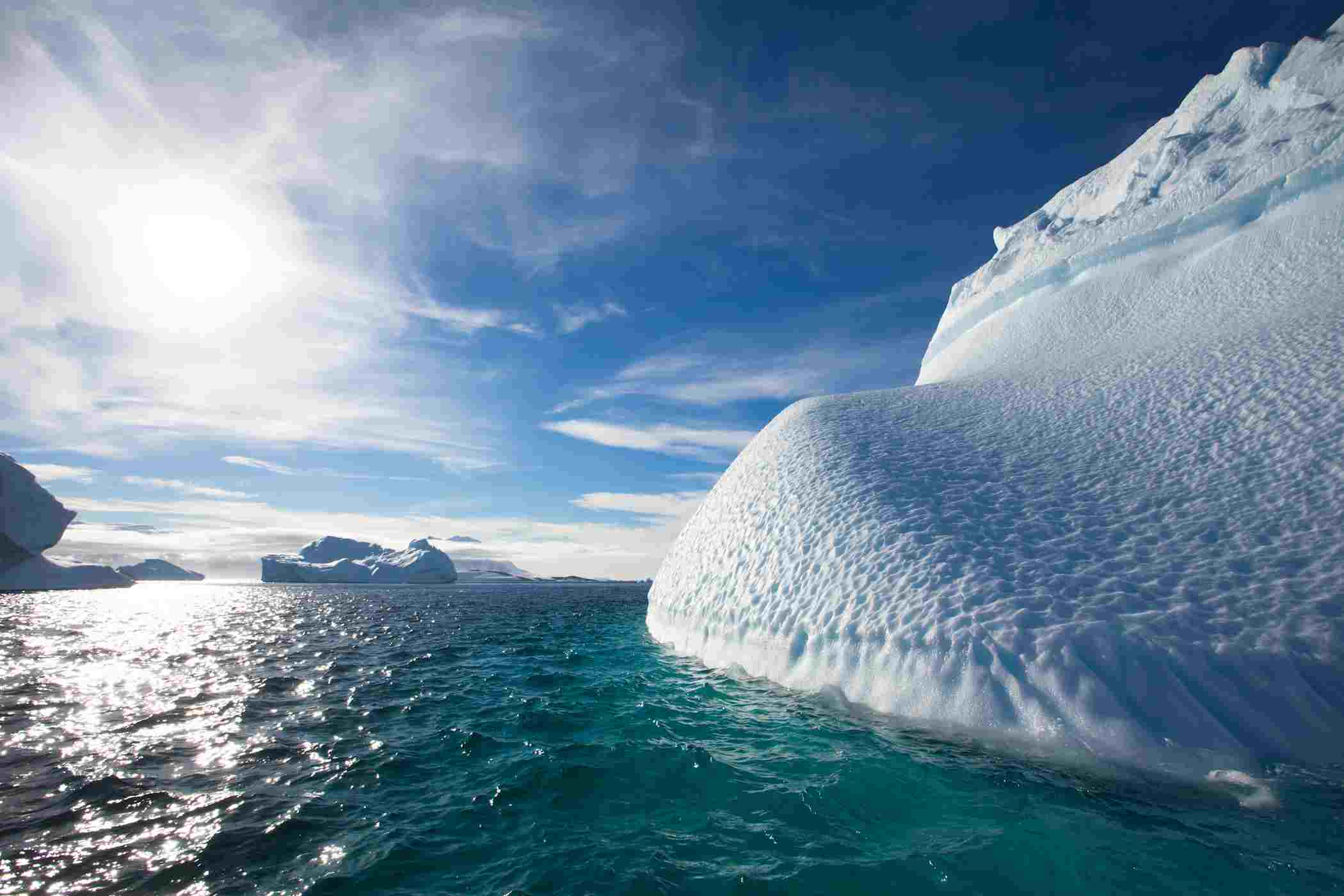Contact Us | 中文简体 | 中文繁體 | English
Geography of Antarctica

Labelled map of Antarctica
Centered asymmetrically around the South Pole and largely south of the Antarctic Circle, Antarctica is the southernmost continent and is surrounded by the Southern Ocean; alternatively, it may be considered to be surrounded by the southern Pacific, Atlantic, and Indian Oceans, or by the southern waters of the World Ocean. It covers more than 14,000,000 km2 making it the fifth-largest continent, about 1.3 times as large as Europe. The coastline measures 17,968 km and is mostly characterized by ice formations.
Antarctica is divided in two by the Transantarctic Mountains close to the neck between the Ross Sea and the Weddell Sea. The portion west of the Weddell Sea and east of the Ross Sea is called West Antarctica and the remainder East Antarctica, because they roughly correspond to the Western and Eastern Hemispheres relative to the Greenwich meridian.
Elevation colored by relief height. About 98% of Antarctica is covered by the Antarctic ice sheet, a sheet of ice averaging at least 1.6 km thick. The continent has about 90% of the world's ice (and thereby about 70% of the world's fresh water). If all of this ice were melted, sea levels would rise about 60 meters. In most of the interior of the continent, precipitation is very low, down to 20 mm per year; in a few "blue ice" areas precipitation is lower than mass loss by sublimation and so the local mass balance is negative. In the dry valleys the same effect occurs over a rock base, leading to a desiccated landscape.
West Antarctica is covered by the West Antarctic Ice Sheet. The sheet has been of recent concern because of the real, if small, possibility of its collapse. If the sheet were to break down, ocean levels would rise by several meters in a relatively geologically short period of time, perhaps a matter of centuries. Several Antarctic ice streams, which account for about 10% of the ice sheet, flow to one of the many Antarctic ice shelves.
East Antarctica lies on the Indian Ocean side of the Transantarctic Mountains and comprises Coats Land, Queen Maud Land, Enderby Land, Mac Robertson Land, Wilkes Land and Victoria Land. All but a small portion of this region lies within the Eastern Hemisphere. East Antarctica is largely covered by the East Antarctic Ice Sheet.
Mount Erebus, an active volcano on Ross Island Vinson Massif, the highest peak in Antarctica at 4,892 m , is located in the Ellsworth Mountains. Antarctica contains many other mountains, both on the main continent and the surrounding islands. Located on Ross Island, Mount Erebus is the world's southernmost active volcano. Another well-known volcano is found on Deception Island, which is famous for a giant eruption in 1970. Minor eruptions are frequent and lava flow has been observed in recent years. Other dormant volcanoes may potentially be active. In 2004, an underwater volcano was found in the Antarctic Peninsula by American and Canadian researchers. Recent evidence shows this unnamed volcano may be active.
Antarctica is home to more than 70 lakes that lie at the base of the continental ice sheet. Lake Vostok, discovered beneath Russia's Vostok Station in 1996, is the largest of these subglacial lakes. It was once believed that the lake had been sealed off for 500,000 to one million years but a recent survey suggests that, every so often, there are large flows of water from one lake to another.
There is some evidence, in the form of ice cores drilled to about 400 m above the water line, that Lake Vostok's waters may contain microbial life. The frozen surface of the lake shares similarities with Jupiter's moon Europa. If life is discovered in Lake Vostok, this would strengthen the argument for the possibility of life on Europa. On 7 February 2008, a NASA team embarked on a mission to Lake Untersee, searching for extremophiles in its highly alkaline waters. If found, these resilient creatures could further bolster the argument for extraterrestrial life in extremely cold, methane-rich environments.



